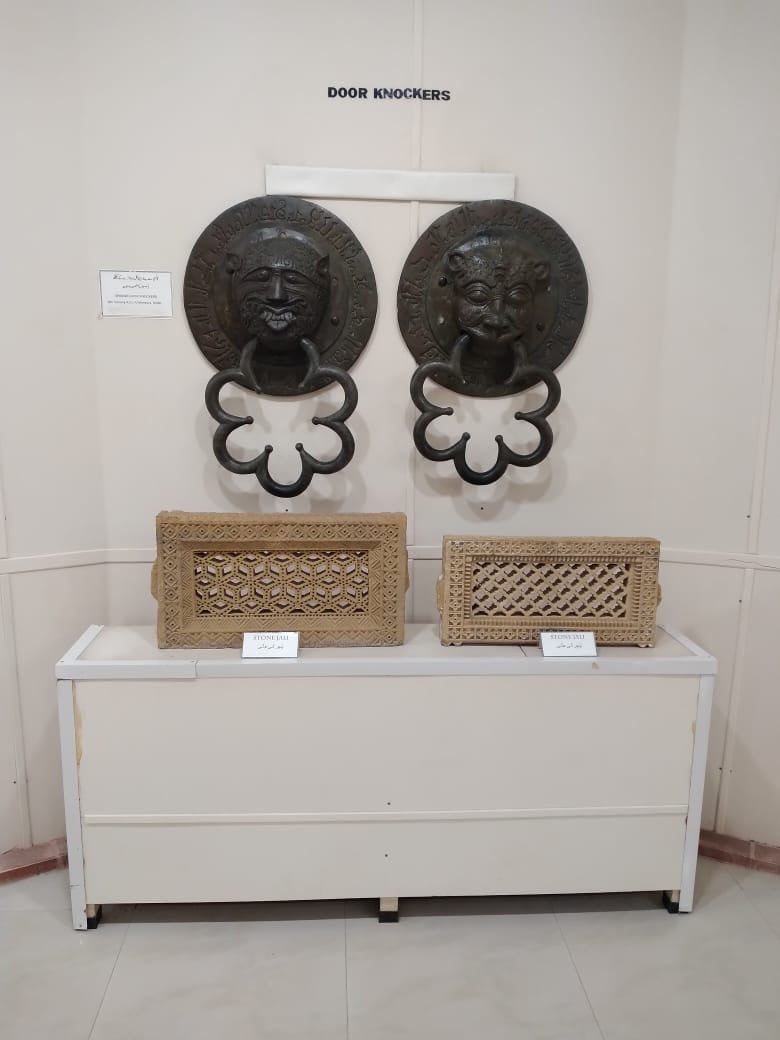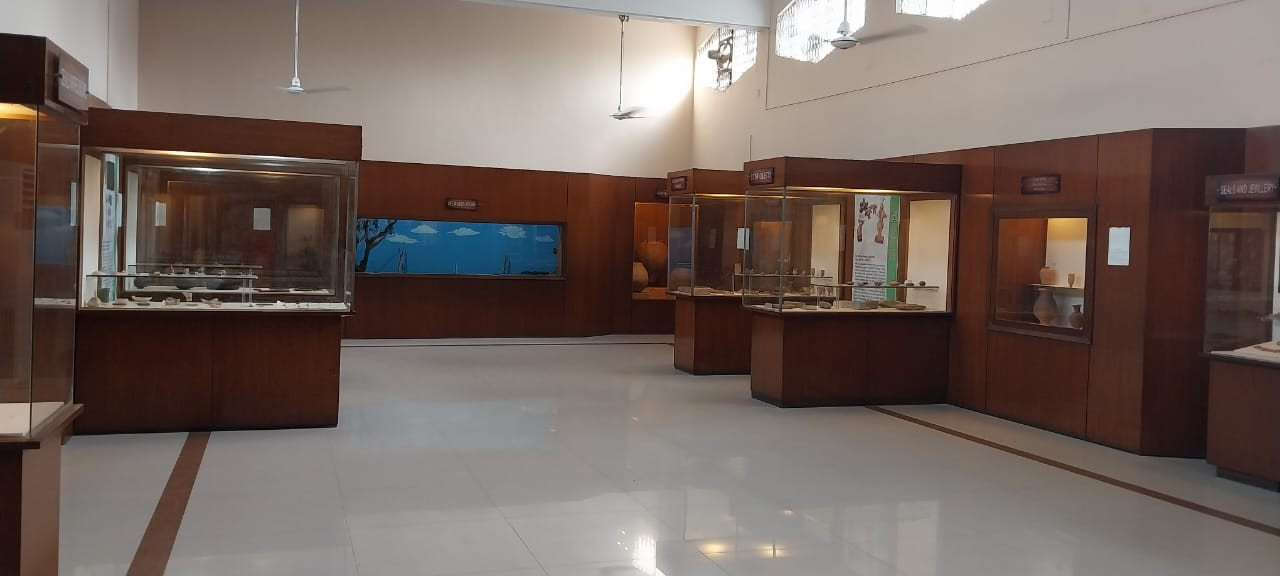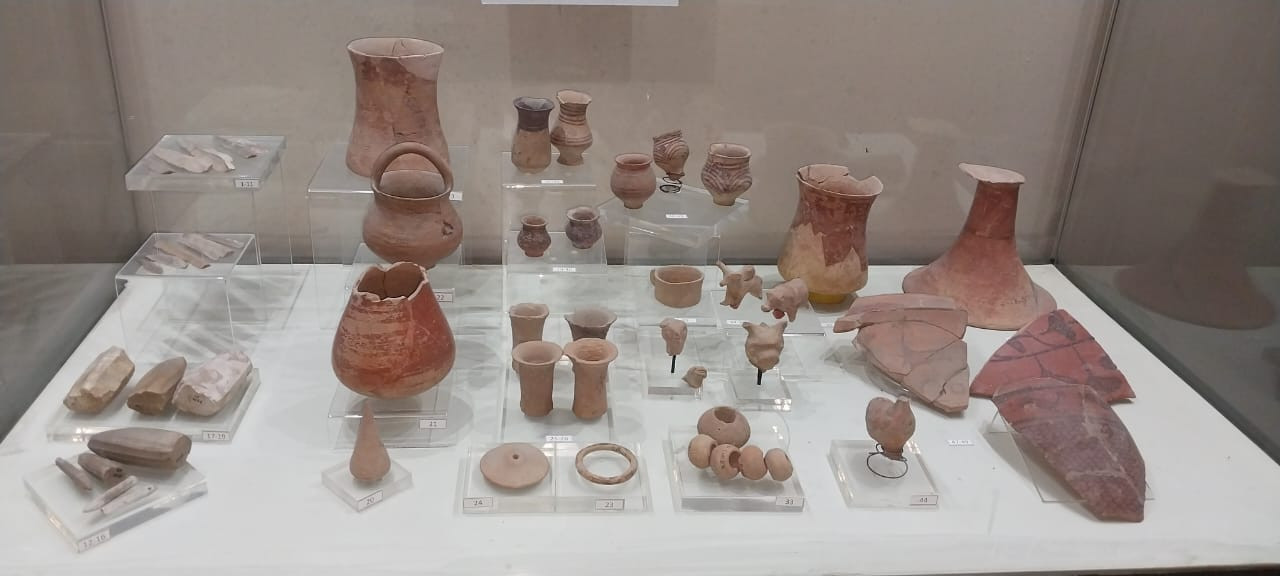Being an authentic source of a wide range of information, museums have always been a big draw for visitors from all ages. The museums displaying artefacts on culture and history hold special significance for a nation as they preserve and transfer the centuries-old journey of their predecessors.
The write-ups about the museums of China published in a section of a local Urdu daily a few weeks ago triggered my curiosity about what would be the current state of the National Museum of Pakistan which I had once visited as a student of archaeology at the postgraduate level. Drawn to the museum once again, now as a researcher of history ever keen to connect the past with the contemporary world, I have come up with this pictorial account expecting that it will grab the interest of readers and motivate them to pay a visit to this treasured hub of archives.
1709449575-0/WhatsApp-Image-2024-03-03-at-11-36-21-AM-(1)1709449575-0.jpeg)
National Museum of Pakistan was established soon after independence, in 1950, at Karachi’s Frere Hall for procuring the leftover assets of the British-era heritage. The present building of the Museum – inaugurated by the then President, General Yahya Khan, on February 21, 1970 – is located at Shahrah-e-Kamal Attaturk in Saddar town. The building has completed 54 years of its existence, broadening its scope while keeping pace with the modern-day demands.
The vast Museum premises feature a magnificent multi-storey building – though calling for renovation and upkeep. The approach to the building from the entrance of the premises is quite fascinating, featuring a grassy track that bifurcates a vast lush green lawn. Four huge replicas of Buddha statues stand tall in the entrance lawn to mesmerise the visitors.

Holding invaluable treasure of the past, the Museum has 11 galleries that narrate the history and the roots of different cultures and civilisations that the Pakistani nation has embraced over the years. A name plate, placed at the entrance door of each gallery, welcomes the visitors giving them the idea of the artefacts displayed inside, deepening their interest further.
The first floor of the building houses nine galleries: Prehistoric Gallery, Protohistoric Gallery, Post-Harappan Gallery, Gandhara Gallery, Hindu Sculpture Gallery, the Quran Gallery, Coins Gallery, Freedom Gallery, and Ethnological Gallery – all containing artefacts arranged in a captivating display.
1709449575-4/WhatsApp-Image-2024-03-03-at-11-36-24-AM-(1)1709449575-4.jpeg)
Initially, the Quran Gallery was located at the ground floor, but it was reorganised and shifted to the first floor in June 2008. The work was completed in seven months. The Quran Gallery features 49 copies of the Quran dating back to different centuries. Also on display are two scripts of 5th and 28th siparahs i.e. sections of the Quran which number 30 in total.
Freedom Gallery holds special interest for visitors, including students. The collection of material related to the Freedom Movement on display in this gallery aptly conveys to its visitors the overwhelming spirit of freedom that echoed in the souls of the young generation, in particular, of the Muslims of Indian sub-continent and that still makes us proud.

Ethnological Gallery exhibits pieces related to culture, lifestyle as well as ornaments and daily-use items like utensils, pottery, etc, highlighting the cultural diversity of Pakistan.
The remaining two of the 11 galleries are located on the ground floor. One is the Manuscript Gallery that was inaugurated in November 2021. It contains manuscripts from 5th to 20th centuries, including rare specimen of the Quran, transcribed in gold, dating back to 851 Hijri. The other is the Islamic Art Gallery. Established in June 2008, the gallery is adorned in radiant off-white background and shelves.

The art of curation at the Museum is done masterfully. It goes beyond merely selecting and displaying artefacts in a particular gallery. It involves crafting a captivating narrative that connects the relics with the visitors.
Artefacts have a tag attached to them for the purpose of providing information about them. In some of the galleries, information is also displayed on soft boards on the wall next to the exhibits. To suit the demands of the digital era, QR Code has also been used to provide information about each artefact in most of the galleries, including the Protohistoric Gallery, Post-Harappan Gallery, Gandhara Gallery, Hindu Sculptures Gallery, The Holy Quran Gallery, Ethnological Gallery and Islamic Art Gallery.

The whole data on the artefacts available with the museum management is digitalised and saved in Google Drive. It can easily be accessed by cellphones on scanning QR Code through QR and Bar Code App that can be downloaded from Google Play Store. Both open browser and sharing options are available when scanning. Data can be saved and shared, thus it can facilitate researchers and students of history.

According to the museum management, the digitalisation work had started in 2019 and around 100,000 artefacts are still to be provided QR code. The digitalisation work, including the completion of the website, is expected to be completed by year-end, depending on the availability of funds. Work on the Virtual Tour of the museum, as a feature of the website, is also on the agenda. So, lying ahead are bright prospects for history and culture lovers across the globe to reach out to the vast and valuable collection at the National Museum of Pakistan.
Dr Swaleha Raziullah is a social scientist with a PhD in History from the University of Karachi. She can be reached at swaleha.raziullah@outlook.com
All facts and information are the sole responsibility of the author
